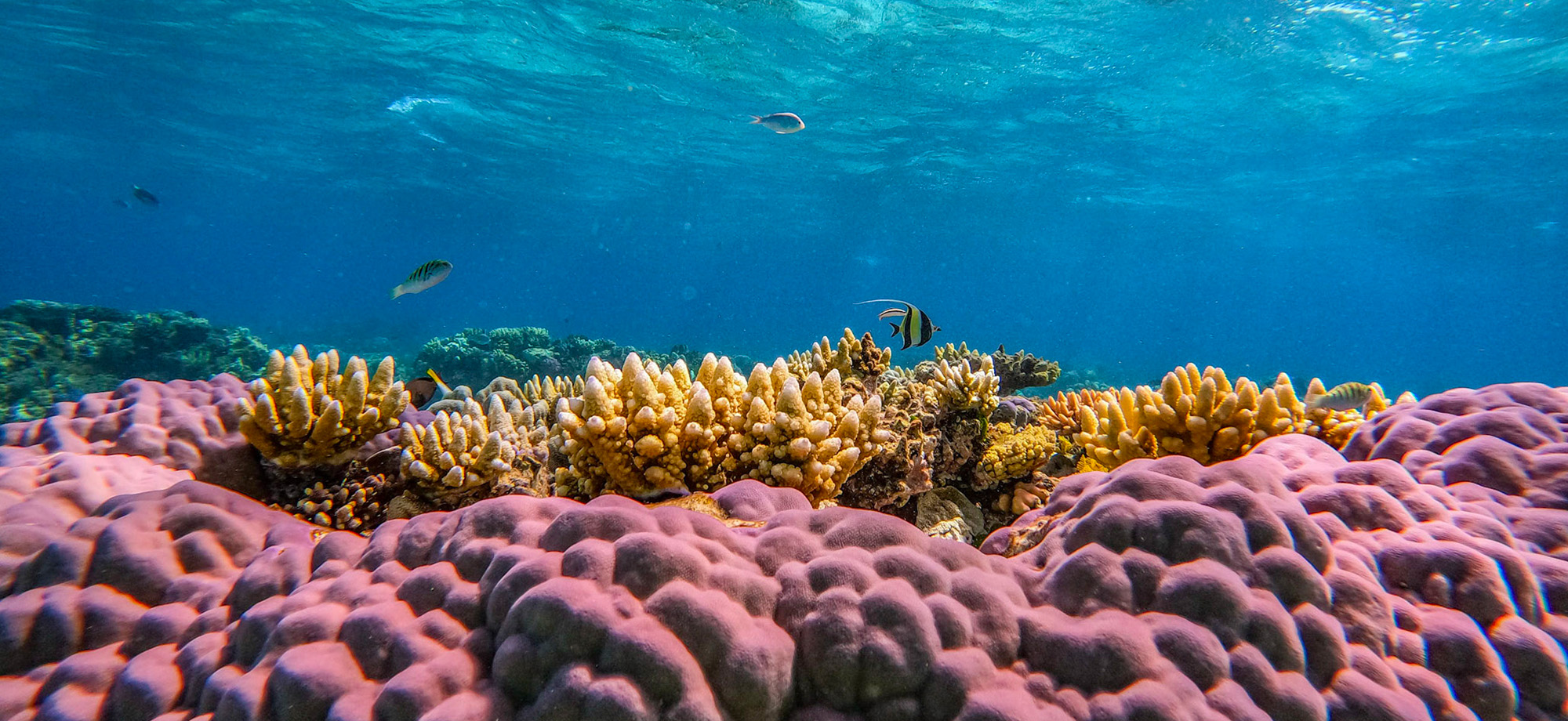The diverse beauty of coral is responsible for some our most beloved marine icons, creating underwater worlds that attract thousands of ocean lovers, diving enthusiasts and tourists each year. Corals also provide a home for a vast array of underwater life.
Corals may look like plants but they are animals that form colonies of identical polyps. Most shallow water coral species have a symbiotic relationship with microscopic single-celled algae that are contained within their tissues, making them unusual in the animal kingdom.
This mutually beneficial relationship defines many of the characteristics of corals and coral reefs─their ability to form calcium carbonate reef frameworks as well as their geographic distribution.
Hard corals extract the raw materials for their calcium carbonate skeletons from the surrounding water column. The availability of these raw materials is determined by the carbonate saturation state of that water.
Many hard corals, including massive Porites, have temperature tolerance ranges. Too-high and too-low temperatures can lead to sub-optimal growth even when sufficient carbonate material is available.
Threats
Australia’s coral reefs face many pressures, some arising naturally in the environment and some the result of human activities. These threats fall into three categories:
- natural stressors such as cyclones, storms and low-salinity events
- direct human pressures, including sediment and nutrient pollution from land runoff, over-exploitation and fishing practices, and engineering and modification of shorelines
- global climate change.
Global climate change is now considered to be the biggest long-term threat to Australia’s coral reefs, with many under threat from increased temperatures and changes in ocean circulation patterns. Increased CO2 in the atmosphere and oceans is also causing increased ocean acidification.
These changes are evident in coral cores taken from large old corals, which contain information about past environmental conditions.
By studying the manifestations of global climate change, such as increased coral bleaching and coral disease, it has become clear that many of these threats are closely linked and exacerbate each other.
Predicted increases in the frequency and intensity of environmental disturbances (such as cyclones) and biological disturbances (such as outbreaks of disease) associated with climate change also threaten the ability of coral reefs to recover.
These disturbances shorten the recovery period available to reefs, and they also destroy neighbouring areas of biodiversity that provide an important source of imported larvae to maintain genetic diversity and resilience of these populations.
Our research
Our current research focuses on the drivers of coral health. We are using this information to map healthy and unhealthy corals, investigate their genetic attributes, and understand the symbiotic relationships between coral and algae, which underpin health.
This will help us understand whether there is potential for corals to acclimatise or adapt to climate change.
AIMS’s recent work on natural carbon dioxide seeps in Papua New Guinea has also given unprecedented insights into what coral reefs would look like if greenhouse gas emissions, and resulting ocean acidification, continues to increase at present rates.
Meanwhile, our 2012 landmark study of the Great Barrier Reef has revealed that the Reef lost 50 per cent of its coral cover in 27 years due to cyclone damage, crown-of-thorns starfish and bleaching.
AIMS’s pioneering work in coral taxonomy has also provided insights into coral responses to climatic change and environmental stresses on corals over the past several centuries.
Our Long-term Monitoring Program has made many of these large-scale and long-term studies possible. This program has found that coral decline from natural disturbance is common and reefs can recover with similar community types.
Connectivity has also been identified as an important factor for coral resilience and recovery, particularly in the face of climate change threats.
More information:
- AIMS coral fact sheets
- Soft corals and sea fans is a comprehensive guide to the tropical shallow water genera of the central-west Pacific, the Indian Ocean and the Red Sea.


